5G is not yet a standard part of the outside broadcast kit but it soon will be as test after test from vendors and broadcasters stack up to prove the technology’s viability.
“Our research has gone from standards and a technology discussion in the IBC Future Zone in 2019, via considerable work during lockdown, to showing how we’ve really moved the gauge forward at this IBC,” says Ian Wagdin, Senior Technology Transfer Manager, BBC R&D. “On the show floor we can expect to see at least five examples using a 5G public network as a production tool.”
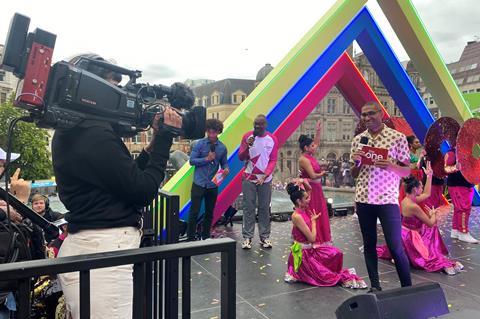
The chief problem with using public cellular networks for broadcast purposes is that congestion renders them unreliable. The BBC’s most recent test at the Commonwealth Games in Birmingham – also the largest scale test yet - set out to prove the potency of using 5G standalone non-public networks to provide live pictures.
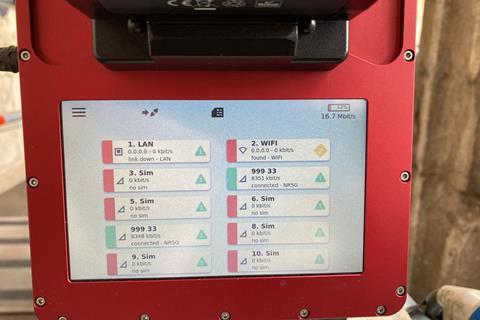
“We have used mobile networks for over ten years for contribution feeds and this has revolutionised news coverage alongside use of the internet,” Wagdin says. “While these work really well, because they are on the same network as the general public and other users, at a busy event it is not always possible to guarantee a robust signal when the crowds arrive.”
BBC R&D, BT and Mobile Viewpoint trial 5G
For the past three years BBC R&D has been looking at the potential of 5G to support this type of event, working on standards, commercial and regulatory requirements and various tests and trials. The Commonwealth Games gave it an ideal opportunity to deploy a network for real.
For this test, BT provided the network and backhaul and Vislink subsidiary, Mobile Viewpoint, provided the technology that encodes and manages the video stream over the networks.
The BBC also conducted other tests on site to look at the handover between cells and from the private to public network. This will enable teams to use the same kit in different scenarios giving increased flexibility to production.

The One Show’s live broadcast on 27 July was the first programme to use this type of technology at scale to cover the Queen’s Baton Relay as it arrived in Birmingham, with large crowds that would have the potential to swamp a normal network.
“We had two live cameras each with a Mobile Viewpoint unit that took the video feeds and connected to the dedicated 5G network,” Wagdin explains. “The BT provided network was in dedicated spectrum centred around 4050 MHz (providing 150 Mbps uplink and 500Mbps downlink). This enabled us to configure the network to favour uplink traffic, which is typical in a production environment, whereas public networks tend to support more downlink heavy applications.”
Stress testing 5G in real world environments
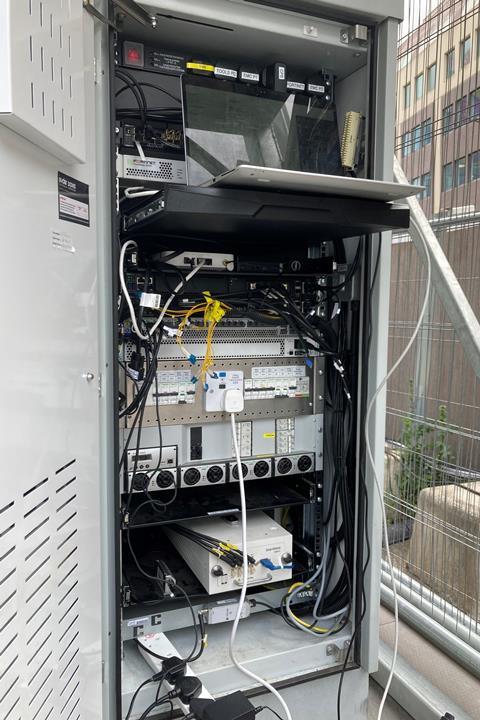
The other key aspect of this trial is that the BBC had no production facilities on site. Signals were passed through the 5G network and backhauled to a Mobile Viewpoint decoder based in a MCR in London. The two cameras were synchronised at this point to enable production to intercut if required. This option can be removed if latency is more of a concern than sync. From there, the output is decoded and sent to whichever gallery wants to use the cameras. This could be The One Show in London, BBC Sport in Salford, or any of the Nations and Regions galleries around the UK.
“It was important for us to test in real world environments where this technology might be deployed,” Wagdin says. “We learned a lot about behaviour in the network and how the public and private networks can support this particular use case to contribute high quality video and audio.
“With Mobile Viewpoint we understood how this type of standalone setup could easily roll over to a public network in that you don’t need a separate set of hardware for connectivity.”
“By making full use of the IP nature of 5G networks, we will start to see more of the benefits that come from remote and connected production” - Ian Wagdin, Senior Technology Transfer Manager, BBC R&D
BBC R&D is exploring 5G working alongside existing radio capabilities for contribution and handover to the OB. At IBC2022, one of its demos will focus on low latency encode/decode from radio cams. Another IBC demo, on the EBU stand, will showcase the interfaces needed to bring 5G into an SMPTE 2110 IP network.
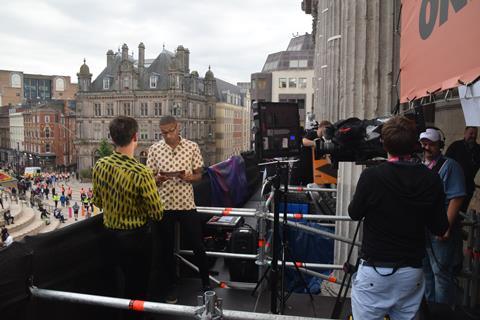
“The 5G Records project has been looking at how a 5G network can handle NMOS and interface with 2110,” Wagdin elaborates. “The idea is to build an IP based ecosystem rather than a separate 5G based ecosystem. If you have an existing radio cam you can send video one way over the network. But if you want tally, talkback, prompting and the other bidirectional functions, you need to have separate radio layers to support it.
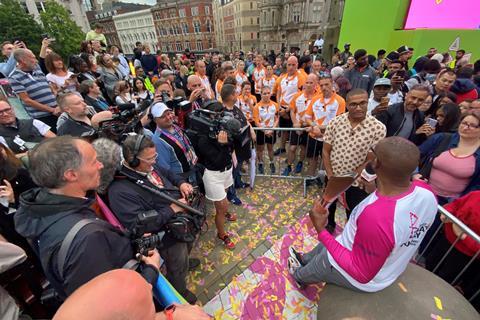
“With an IP-based system you can have the whole back channel to make use of things like camera control. By making full use of the IP nature of 5G networks, we will start to see more of the benefits that come from remote and connected production.”
5G network demos in action at IBC2022
Other BBC R&D 5G demos at IBC include ‘5G Remote Production … in the middle of nowhere’ - a live feed from the remote location of the Highland Games in Pitlochry, backhauled over a LEO satellite network to the RAI. While ‘5G and the Arena of the Future for XR Events’ looks at the combination of 5G and XR (Extended Reality) technology in the 3D arena of the future.
Other non-live demos showing 5G over private networks include those emanating from Ireland, New Zealand and Kenya.
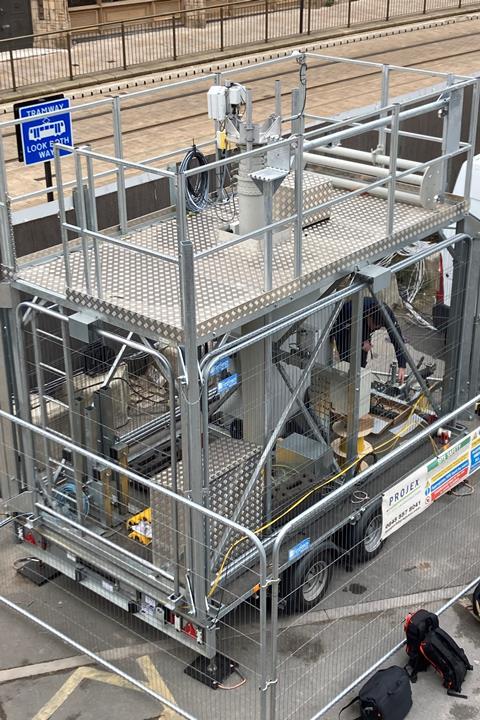
The BBC is also working with Olympic broadcaster OBS “to see what is possible” for Paris 2024 and while the BBC has nothing specific in the works around the Qatar World Cup this December, Qatari broadcaster Al Jazeera is planning to use 5G at the event.
Upcoming releases of the 5G specification, paving the way to 5G Advanced and ultimately 6G networks, promise further useful benefits.
“Release 17, in theory, contains the ability to carry advanced timing signals to synchronise cameras at the point of source rather than the point they land,” Wagdin says. “Currently, syncing cameras on reception adds latency because you need to wait for all feeds to come in. Whereas co-timing at the point of acquisition means you can do very accurate timing.
“This is important for the video layer so we can effectively genlock cameras and also for the IP layer so we can add packet timing and carry time-stamped traffic.”
- 5G is one of the hottest topics in broadcasting and, for the media and entertainment sector, the technology will prove to be transformative. Read more about 5G in broadcast.
























No comments yet